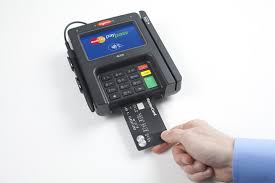
Due to massive losses that have occurred through large-scale credit card data breaches, there will be a change in credit card liability. Beginning on October 1, 2015, a shift in liability places the responsibility for fraudulent credit card charges on the merchant and/or banks that don’t use new technology to accommodate chip-based credit cards. The changes, the first major alterations in decades, will make credit card fraud more difficult.
The traditional magnetic strip credit cards now in wide use will be replaced with cards that have embedded chips and PINS. Fraudsters will find themselves stymied as more users turn to these cards, dubbed EMV cards, an abbreviated form of Europay, MasterCard and Visa.
The Losers
The losers will be the merchants who are not EMV ready and banks who don’t issue cards with the new technology. Historically, card issuers have eaten the loss due to counterfeit cards. Now the responsibility will shift to the merchant who processed the card without the new technology or the bank that issued the card without EMV technology. Magnetic card swipes are easily counterfeited, and now account for billions of dollars in fraud losses every year – an estimated 7 billion in the United States alone.
Start Dates
On Oct.1, when the rules change, merchants who have not installed EMV terminals will be burdened with the costs of fraudulent transactions, but those who offer EMV protected services will be off the hook. When the new technology was developed, the card networks decided that improving point of sale devices and the design of the credit card itself would be the best way to go.
It will take time for the new technology to settle in. Experts estimate that by the Oct. 1 start date about 35 percent of merchants will have the technology to process EMV sales. And only 15 percent to 25 percent of cards issued will have the chips to facilitate the secure purchases. By the end of the year, the expectations are that 70 percent of credit cards, 41 percent of debit cards and 59 percent of terminals will be ready for the new technology.
Big Retailers Comply
Predictably, the largest merchants are gearing up to lead the parade. They and others are trying to stay ahead of the curve in being prepared for the change. Widely publicized security breaches such as the devastating Target fiasco are impetus for the merchants to make themselves – and their customers – more secure. The cost of installing the new equipment is about $200 per terminal.
New Industry Created By EMV Needs
Those who produce and install the equipment are being hard-pressed to meet demand. Small merchants are at the tail-end of the parade toward EMV technology, and the demand is so great there are many competitors ahead of them.
What Banks Issue EMV Credit Cards?
Among the card issuers, large banks also are better poised to make the change, with regional banks less ready to distribute EMV-enabled cards to customers. There is no huge supply of EMV chips, and these institutions may see a lag in catching up with the technology, so they may face greater fraud losses. American Express, Bank of America, Chase, Citi and Wells Fargo banks all issue cards with the new chip technology.
Europe is ahead of the United States in implementation of EMV-protected card transactions, with experience going back to 2005. Since then, online sales have increased significantly. The experts expect the same jump in the U.S.
Looking Forwards
The shift in liability will open new doors for mobile payment processing in 2015. New technologies that process payments through mobile phones may lead to some steep learning curves by consumers, retailers and banks, but chances are the learning will be worth it in the long run.
Read More At Wall Street Journal